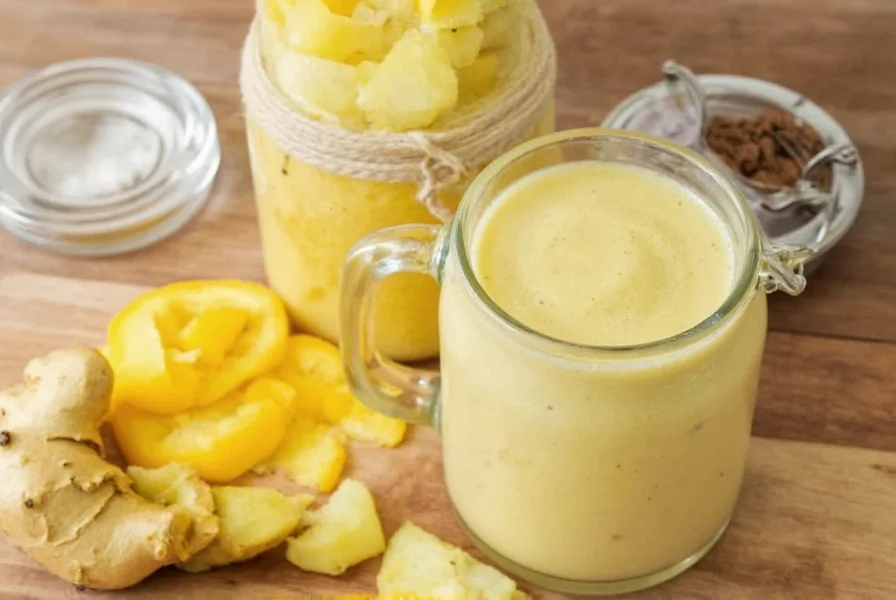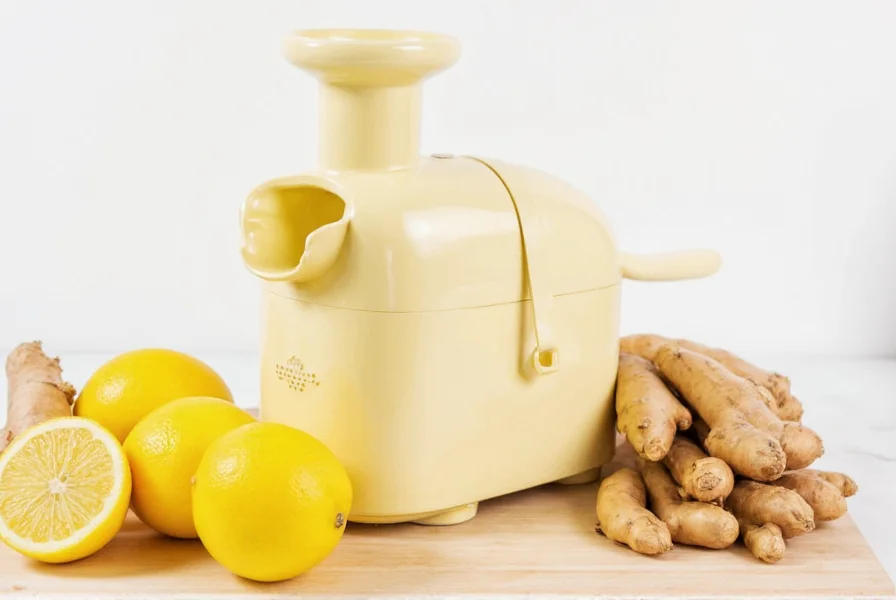Extracting ginger juice unlocks concentrated benefits from this powerful rhizome. Unlike powdered alternatives, fresh ginger juice preserves volatile compounds that provide distinctive flavor and therapeutic properties. Whether you're addressing digestive discomfort, seeking immune support, or enhancing culinary creations, understanding proper juicing techniques ensures you maximize both yield and potency.
Methods for Juicing Ginger
Several approaches work effectively for how to juice fresh ginger root, each with distinct advantages depending on your equipment and intended use:
Using a Juicer

Centrifugal or masticating juicers efficiently process ginger when prepared correctly. Peel the ginger and cut into 1-2 inch pieces that fit your juicer's feed chute. For best results with hard ginger root, alternate with softer fruits like apples or pears to help push the ginger through. Masticating juicers typically yield more juice with less foam than centrifugal models.
Blender Method
When a dedicated juicer isn't available, a high-speed blender provides a reliable alternative for extracting ginger juice without special equipment. Peel and roughly chop 1-2 inches of ginger, add ¼ cup water, then blend on high for 60-90 seconds until completely pulverized. Strain through a fine-mesh sieve or cheesecloth, pressing firmly to extract every drop of liquid. This method yields slightly less concentrated juice but works well for immediate use.
Manual Techniques
For small quantities, manual methods prove surprisingly effective. The best way to extract ginger juice manually involves:
| Method | Process | Yield |
|---|---|---|
| Microplane Grater | Grate peeled ginger over bowl, squeeze pulp in cloth | High concentration |
| Garlic Press | Chop ginger small, press through holes | Moderate, quick |
| Mortar & Pestle | Pound ginger with pinch of salt, strain | Traditional method |
Science-Backed Benefits of Fresh Ginger Juice
Ginger juice contains concentrated gingerols and shogaols—bioactive compounds responsible for its distinctive flavor and health benefits of ginger juice. Research published in the Journal of Medicinal Food confirms these compounds provide:
- Digestive support: Stimulates saliva and bile production, easing digestion
- Anti-inflammatory effects: Reduces markers of inflammation comparable to some medications
- Nausea relief: Particularly effective for morning sickness and motion sickness
- Antioxidant properties: Neutralizes free radicals more effectively than many common vegetables
A 2021 clinical trial demonstrated that 2 grams of fresh ginger juice daily significantly reduced muscle pain after exercise. Unlike powdered ginger, fresh juice preserves volatile compounds that degrade during drying processes, making fresh ginger juice vs powdered ginger notably more potent for therapeutic applications.
Practical Applications and Dosage
Understanding how much ginger juice per day to consume ensures safety while maximizing benefits. Most studies use 1-2 grams (approximately 1-2 teaspoons) daily for general wellness. Higher therapeutic doses up to 4 grams may be appropriate short-term for specific conditions like nausea.
Culinary and Remedial Uses
Incorporate ginger juice into your routine with these evidence-based applications:
- Immune support: Mix 1 teaspoon with lemon juice and honey in warm water
- Digestive aid: Consume ½ teaspoon 15 minutes before meals
- Nausea relief: Sip 1 teaspoon diluted in water at first signs of discomfort
- Culinary enhancement: Add to salad dressings, marinades, or smoothies
Storage Guidelines
Proper storage maintains potency of homemade ginger juice. Store in an airtight glass container in the refrigerator for up to 5 days. For longer preservation, freeze in ice cube trays then transfer to freezer bags—maintaining effectiveness for 3-6 months. Adding a squeeze of lemon juice slows oxidation and preserves color.
Safety Considerations
While generally safe, certain populations should exercise caution with ginger juice. Consult your healthcare provider if you:
- Take blood-thinning medications (ginger has mild anticoagulant properties)
- Have gallstone disease (ginger stimulates bile production)
- Experience heartburn or GERD (ginger may relax lower esophageal sphincter)
- Are pregnant beyond the first trimester (high doses may affect fetal development)
The recommended maximum daily intake is 4 grams of fresh ginger root equivalent. Most people tolerate 1-2 grams daily without side effects, though some may experience mild heartburn or mouth irritation initially.
Optimizing Your Ginger Juicing Experience
Select firm, smooth ginger root with tight skin for maximum juice yield. Older ginger with wrinkles or soft spots contains less moisture. Store unpeeled ginger in the refrigerator's crisper drawer for up to 3 weeks, or freeze whole for extended storage. Freezing actually breaks down cell walls, making using frozen ginger for juicing more efficient than fresh in some methods.
For enhanced flavor combinations, try these ginger juice recipes that increase palatability while adding complementary benefits:
- Ginger-Turmeric Tonic: 1 tsp ginger juice + ½ tsp turmeric juice + pinch black pepper + 8oz warm water
- Digestive Elixir: 1 tsp ginger juice + ½ tsp fennel seed infusion + lemon wedge
- Immunity Shot: 1 tsp ginger juice + ½ tsp echinacea extract + dash cayenne











 浙公网安备
33010002000092号
浙公网安备
33010002000092号 浙B2-20120091-4
浙B2-20120091-4